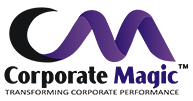
I asked my 6-year-old son this morning what he thought might be important to talk to people about today. He said; “Responsibility, Mum. I think it’s very important!”. So I asked him “Do you know what it is?” He replied, “Yesssss, it’s when you look after stuff”. I then asked, “Why is it so important?”
He rolled eyes at me and told me this story.“Well mum, say for example you have a dog as we do. You have to give her pats and cuddles so she knows you want her, then you have to feed her, give her a bed to sleep in, and sometimes give her treats. Oh, and she needs to go for walks and have toys to keep her busy so she doesn’t eat our socks!
Oh, and if you have cats as well like us, you need a scratching pole and a place high up for them to be safe from the possums! Do you get it now mum?”
I then asked him “Where did you learn that?” he replied, “From you, silly!”
I stopped to think about what he said, and how it relates to adults taking responsibility.
Sometimes we take on too much responsibility and go into overwhelm. It’s at this point we can blame others for not meeting expectations or burden others though autocratic leadership and urgent unplanned meetings. We forget how to ask for help or to say no or not right now and bury our head in the sand!
To take leadership to the next level we must remember some of the key areas of responsibility.
This is how I have understood his analogies in relation to a professional setting.
Taking ownership: “Well mum, say for example you have a dog as we do”
• Be accountable for your own outcomes and actions
Value your team: “You have to give her pats and cuddles, so she knows you want her!”
• Understand the strengths and value your teams bring individually and in collaboration and appreciate the value they bring
Resources: “then you have to feed her, give her a bed to sleep in”
• Make sure your teams have the tools and resources they need to do their roles and tasks
Reward & recognition: “and sometimes give her treats when she does good things”
• Celebrate individual & team results, remembering that people are unique and require a unique response to reward and recognition.
Clear expectations and guidelines: “she needs to go for walks and have toys to keep her busy so she doesn’t eat our socks!”
• Make sure you are clear on expectation and delivery timelines, otherwise people may not respond the way you want them to.
Safe & motivating environment: “if you have cats as well like us, you need a scratching pole and a place high up for them to be safe from the possums!”
• You have a responsibility to ensure you create a psychologically safe environment, one that engages people to want to be part of the team. This also requires a high level of observation.
Clear Communication: “Do you get it now mum?”
• Check-in and ensure there is clarity around communication. Ensure lines of communication are understood.
Modeling leadership behaviour: “Where did you learn that?” he replied, “From you silly!”
• Be observant of others behaviour and build your own self-awareness to ensure your impact is that of broadening your people and developing their potential
When you consider your own responsibilities, don’t bury your head in the sand, look up and observe what is going on around you, what opportunities are there. What can you do differently?
Remember, when you are blaming, pointing your finger at someone. Three of your fingers are pointing back at you. Ask yourself, what’s your part in this
When you want to relieve your own pressure by burdening someone else, make sure you are not just dumping from your own bucket into theirs. Considering the rules of delegation. Is this the right person? Or just the right-now person?
Do they have the talent, opportunity, and willingness to take this on? Remember you get what you plan for!
Finally, remember you learn through teaching and you teach through learning.
Engage a growth mindset. As a leader, your top responsibilities are going to be to deliver a result for your business and to do that you need to deliver results through maximizing the potential of your people.
Thank you for taking the time to read my article. I hope it gives you something to think about or something to act upon.
Corporate Magic Pty Ltd
+61 405523507 | Kelley@corporatemagic.com.au / www.corporatemagic.com.au
Behavioural Coach & Facilitator | NLP Master Practitioner & Trainer | Gallup Strengths Coaching| Extended DISC behavioural Profiling Leadership Mastery | Executive Coaching
